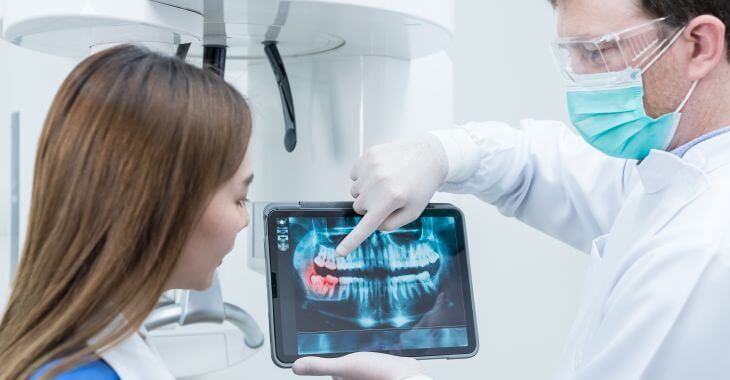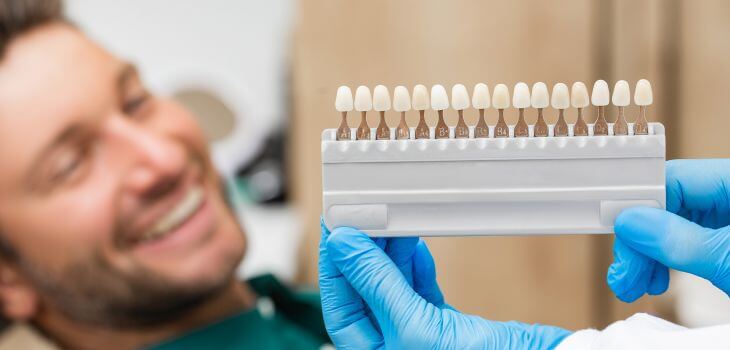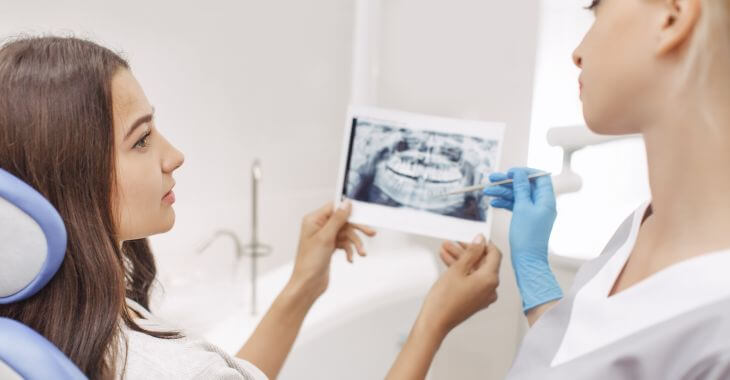What to Expect During Non-Surgical Wisdom Tooth Extraction Recovery

The wisdom teeth are the most commonly removed teeth, especially for a young adult. These teeth can be removed with oral surgery, but many do not require surgical extraction. If you are having these molars removed, here is what to expect during non-surgical wisdom tooth extraction recovery.
While other teeth may need to be removed later in life as they become diseased or damaged, wisdom teeth are often removed while they are still healthy. If they grow sideways or are impacted in the gum tissue, oral surgery is normally needed to remove these problematic molars.
If your wisdom teeth completely erupt from the gums but still pose an oral health risk, your dentist may suggest a non-surgical wisdom tooth extraction. Instead of cutting out the teeth, the wisdom teeth are pulled out using specialized dental equipment.
Preparing for Non-Surgical Wisdom Tooth Removal
Wisdom teeth are removed for many reasons. They may be causing pain due to minimal space in the mouth or impacting the alignment of other teeth. Wisdom teeth are notoriously hard to keep clean and may contribute to tooth decay or periodontal disease.
If your dentist has recommended a non-surgical wisdom tooth extraction, he or she will go over the anesthesia and sedation options. Unlike oral surgery, non-surgical wisdom tooth removal does not require sedation, but some patients may prefer to be unaware during the procedure.
Your dentist will need to take x-rays of the wisdom teeth roots to determine whether non-surgical extraction is possible. If the roots are twisted or splayed outward, oral surgery may be needed. For conical-shaped roots, non-surgical removal can be performed with minimal risk of complications.
If you are having sedation during your procedure, your dentist will discuss what to expect the day of your extractions. You may need an adult to drive you to and from your appointment and you may need to stay at the clinic until the anesthesia begins to wear off.
Day of Your Wisdom Tooth Removal Procedure
Patients undergoing a non-surgical wisdom tooth removal can expect the procedure to take less than an hour in most cases. First, the gums and teeth will be completely numbed with a local anesthesia. If you are using sedation, you may be asleep or unaware during the injections.
Once the teeth are completely numbed, your dentist will use tools to loosen the roots from the jawbone. If you are not using sedation, you may feel some pressure, but it will not be painful. In most cases, each tooth can be removed in 10-15 minutes.
When the wisdom tooth or teeth are removed, gauze will be packed into the socket to stop bleeding. You will bite down on the gauze to help it stop bleeding – your dental team will likely replace the gauze a few times before you leave to recover at home.
Non-Surgical Wisdom Tooth Extraction Recovery
Your dentist and dental team will give you instructions for post-procedure care after your wisdom tooth removal. These will include details about resting, eating, cleaning, liquids, smoking cessation and how to control discomfort when the local aesthesia wears off.
It is expected that there will be some pain to endure when the numbness dissipates in a few hours after the wisdom tooth removal. Your dentist will prescribe or recommend pain relievers that can be used during your non-surgical wisdom tooth extraction recovery.
Worst Day of Pain After Wisdom Tooth Extraction
Everyone may have a different pain experience during their non-surgical wisdom tooth extraction recovery. It depends on your pain level and whether you had one or multiple teeth removed, as well as other factors. The worst day of pain after wisdom tooth extraction may also vary person to person.
If you have your wisdom tooth removed early in the morning, the worst day of pain after wisdom tooth extraction may be the same day. However, for most people, day two or three can be more painful. This is because the anesthesia will be gone, and swelling may occur in the following days.
Pain can be managed with OTC pain relievers, or your dentist may prescribe pain medication. You can take them on the worst days of pain after your wisdom tooth extraction to give you relief. Some other ways to manage your pain during non-surgical wisdom tooth extraction recovery include:
- Applying an ice pack to the outside of your cheek for 10-15 minutes a few times per day
- Sleeping and resting with your head elevated
- Following your after-procedure care instructions exactly
- Take it easy for 3-5 days after your wisdom tooth extraction

It is understandable to be nervous about a wisdom tooth removal procedure, but most go smoothly and cause minimal discomfort. If you follow your dentist’s advice for your non-surgical wisdom tooth extraction recovery, you should be feeling better within a few days.
The information provided on this website, including text, graphics, images, and other materials, is intended solely for informational purposes and should not be used as a substitute for professional medical advice, diagnosis, or treatment.




)